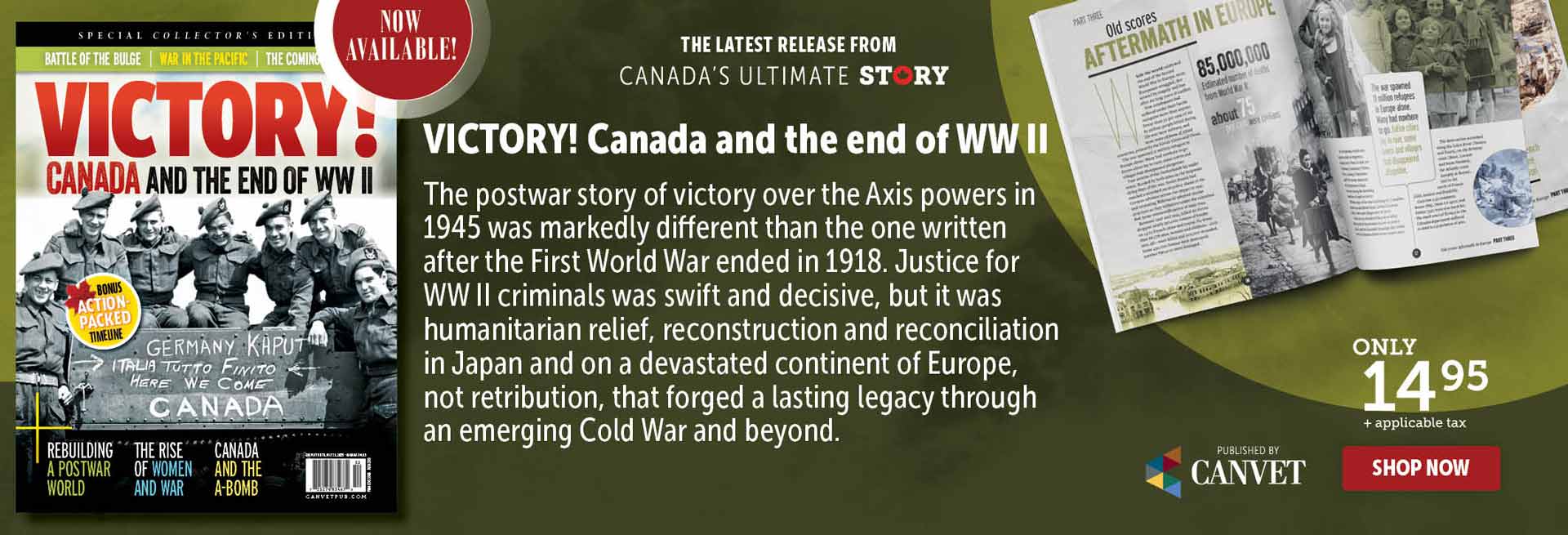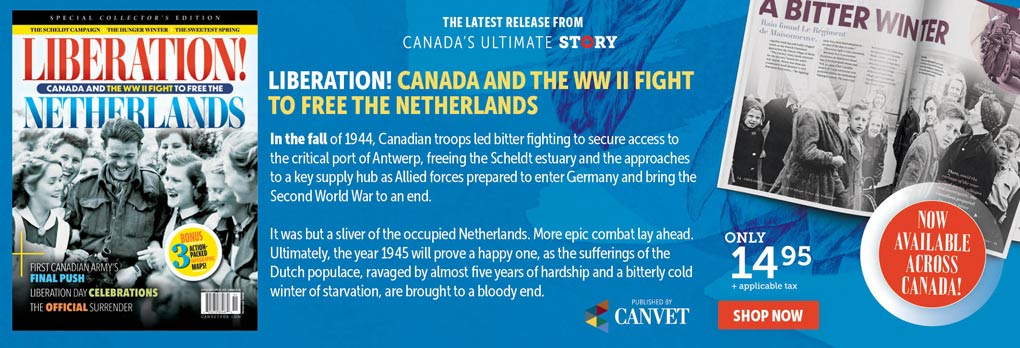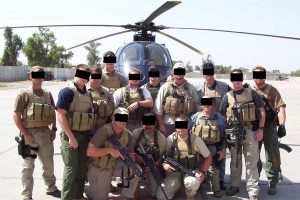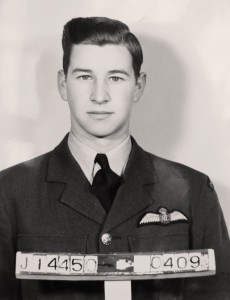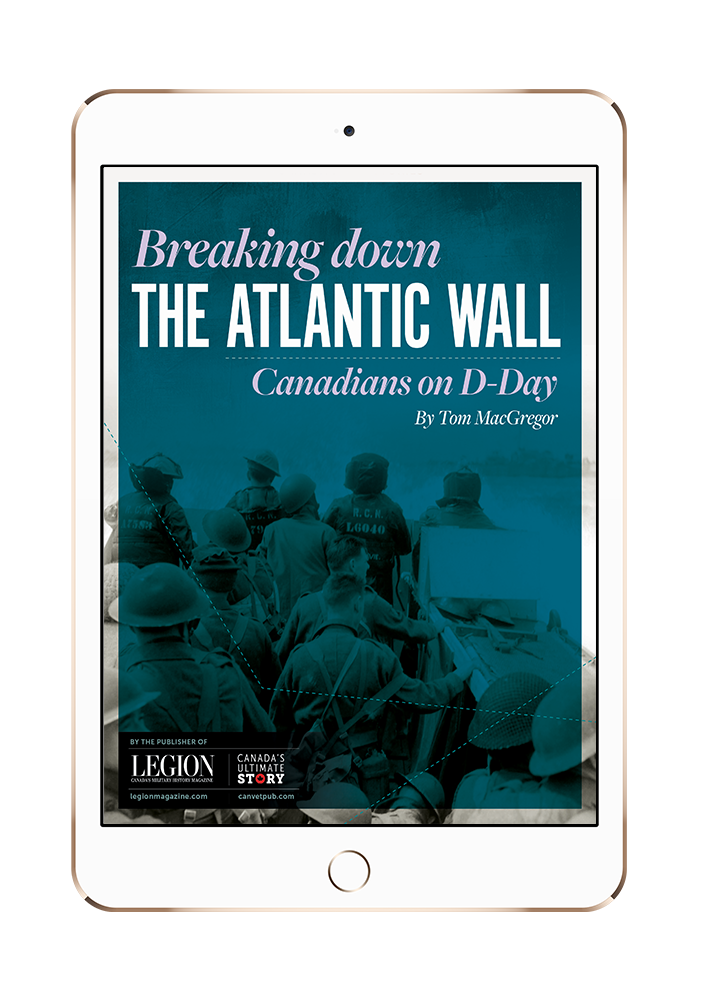
Ottawa lad, Donaldson (Buddy) Holloway (right), who was killed in WW II, and his close friend Reg Harrison. After the war, Harrison would go on to marry Holloway’s bereaved fiancée. [TheCanadianWarMuseum]
In August 1995, there were said to be 501,690 living Second World War veterans in Canada.
In 2010, that number had decreased to around 163,000.
As recently as 2023, combined figures for WW II and the Korean War indicated that little more than 9,200 veterans of those conflicts were still alive. That figure has almost certainly declined exponentially throughout the last two years and beyond.
Now, it seems, is our last chance to preserve their memory, not only recollections of the deadliest conflict in human history, but of largely untold postwar experiences in the successive days, weeks, months, years and decades navigating civvy street.
The Canadian War Museum has done just that with its latest exhibit called “Last Voices of the Second World War.” Using the veterans’ own words and insights, the recent initiative, running until Jan. 18, 2026, features more than 50 interviews with former service members, as well as their families, revealing the complexities of transitioning back to everyday life. For many, there was little everyday about it.
Accompanying these perspectives are a sizable array of artifacts, photos, original art and written testimonies, all combined to create a rich tapestry of life after war.
Museum historian and exhibit co-curator Teresa Iacobelli, who worked on the project with fellow historian and colleague Melanie Morin-Pelletier, spoke about developing “Last Voices of the Second World War” in a Legion Magazine exclusive.
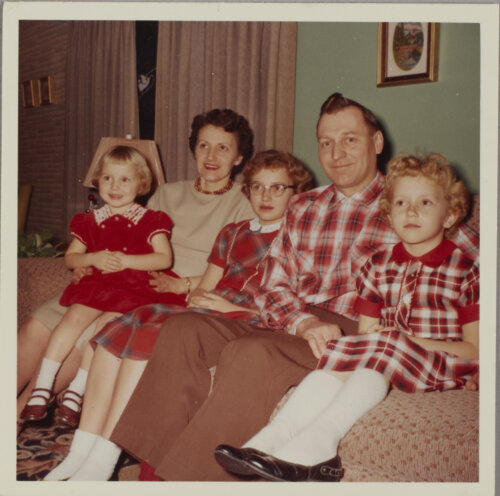
Jean Woods with her children, and her husband, Reg Harrison, who served and was close with Jean’s initial fiancé.[TheCanadianWarMuseum]
This exhibition is not about the Second World War per se, but the veterans. It’s based on about 50 interviews with veterans and 30 with family members done beginning in 2022, most of which came from the “In Their Own Voices” project led by Michael Petrou here at the museum. The purpose of that particular project was to record the postwar experience of veterans from the Second World War to the present day, while we focus on the postwar experiences of WW II veterans.
When we went through the interviews that Michael did, certain themes really stood out strongly to us, and those themes went on to form the basis of our exhibition. Of course, every WW II veteran’s journey is unique. That said, reoccurring themes did arise, which play out in our main zones: becoming a veteran, which highlights the return to civilian life; a lifelong journey, which explores the long-term impacts of war on veterans and family members; and making meaning, which is really where the veterans discuss how they remember and share experiences in their later years.
We offer space to the Merchant Navy story, for example, through a veteran named Aubrey Ingraham. He talks about what it was like to serve, but also that postwar fight for recognition that went on for decades. The stories of women also feature very prominently, as do those of Indigenous and Black Canadians and the issues they faced, like being denied access to certain benefits and Legion branch halls.
Postwar trauma is another aspect we explore, including the experiences of PoWs from [the 1941 battle of] Hong Kong. We also feature accounts from the children of these veterans, which really speaks to the concept of intergenerational trauma.
Pilgrimages can play a large role in the lives of many veterans. Only in returning to those old sites of battle do they truly begin to appreciate the impact of their service.
I’d say we have about 50 artifacts in total—most from our collections, but some on loan—that are used to tell or enhance different stories. Additionally, the exhibition features a lot of AV [audio-visual] and oral histories that the visitors can access at kiosks. Anchoring the exhibition is a feature media presentation on Reg Harrison.
About Royal Canadian Air Force veteran Reg Harrison
We chose Reg Harrison’s story for a number of reasons. For one, he’s very clear during his interview and has a real presence on film. He chuckles sometimes. He’s self-deprecating. He’s also very genuine, and you can tell he’s emotionally processing as he speaks. Also, his account has a number of themes that could be considered representative of a large proportion of veterans, themes such as developing bonds of friendship, the endurance of grief and more.
Reg Harison became a pilot and served in the RCAF. While training, he became friends with another airman named Donaldson (Buddy) Holloway from Ottawa. Now, Buddy was engaged to a woman named Jean Woods; however, in 1944, he was killed in an accident. Reg then wrote to Jean to express his condolences, but also to tell her that if he survived the war, he planned to visit her back in Canada.
The end of the war came, and Reg started to hesitate, feeling unsure about visiting Jean and all the emotions it entailed. But he still decided to meet her in Ottawa on his way home, originally planning to stay for a mere two days—it turns into four.
Reg went home, but ultimately returned to Jean. They were engaged a year later.
You get a sense through the film that Reg is still making sense of all this; maybe it’s survivor’s guilt. He does shed a few tears through the interview on occasions.
But he and Jean still went on to have a life together, raise a family together, with Jean wearing two rings on her engagement finger for the rest of her life. Both of them later returned to England to the cemetery where Buddy is buried, standing together in private thought. After a period of time, Reg left to visit the grave of someone else he flew with—and in doing so, he left Jean with her late partner.
What I find interesting—and perhaps it’s generational in some respects—is that Reg never asked her—and she never told—what had been going through Jean’s mind when she was left alone at the site. There’s something beautiful about that.
Reg is 103 [in August 2025]. His daughter has said that physically, he’s starting to slow down a little now, but he’s apparently still there mentally, still the same Reg.
About preserving veterans’ stories
Since 2022, many of our Second World War veterans have passed away, but there are some who persist—now in their late 90s and early 100s. This is really our last opportunity to hear the voices of those who were actually there, which is why our interviews are so important. They reveal the power of oral history and the general power of recording stories, especially as the WW II generation will soon be gone.
This abridged interview has been edited for brevity and clarity.
Advertisement






